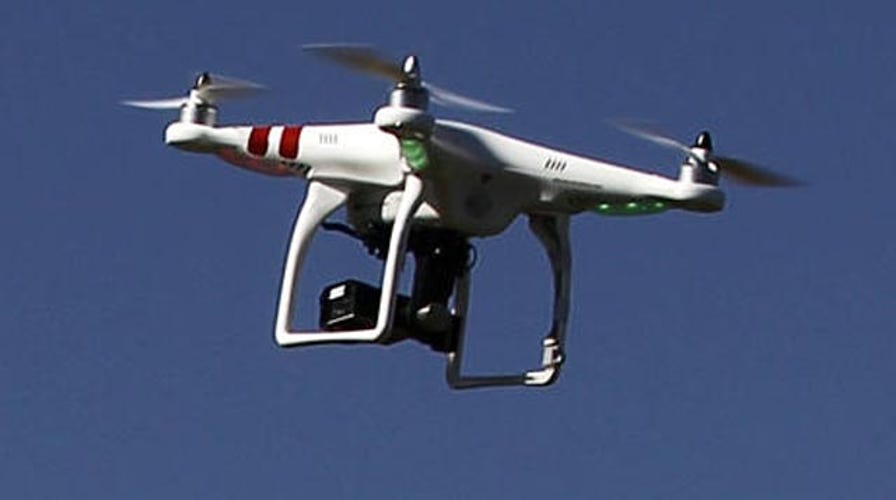A fresh new ruling by New Mexico's highest court involving a helicopter search could leave the future of drone-assisted law enforcement probes up in the air, according to legal experts.
The state's Supreme Court tossed out the conviction of an alleged Taos pot farmer who consented to a search of his property nine years ago, and was convicted on the strength of evidence gathered by State Police in a helicopter. In reversing a lower court's decision, the court ruled that Norman Davis' consent to a search did not extend to the aerial scrutiny that turned up a greenhouse containing 14 marijuana plants. While the decision noted the helicopter created a noisy intrusion, the court left unclear how it would treat drone searches.
“Unobtrusive aerial observations” are generally permitted, Justice Richard Bosson wrote in the decision. But in describing such searches, he cited flights at levels above 400 feet.
The case was watched closely by Fourth Amendment experts who believe it could have repercussions for how drones are used by law enforcement.
“Domestic drones will devastate the Fourth Amendment unless there are some really strict guidelines,” John Whitehead, president of the Rutherford Institute, a Charlottesville, Va.,-based nonprofit legal group, told the ABA Journal in an article about the New Mexico case. “Information collected by a drone should not be used as evidence by a court of law.”
Police received Davis' consent, but did not have a warrant. James Hallinan, spokesman, for New Mexico Attorney General Hector Balderas, expressed law enforcement's frustration in being told consent to search did not allow the use of airborne equipment.
"We believe helicopter operations remain an important tool in the detection and apprehension of drug traffickers," Hallinan said, adding that the decision "specifically declined to provide guidance regarding new technologies such as drones."
In the search of Davis' property, the helicopter pilot testified he stayed above 100 feet for 15 to 30 seconds.
The decision is raising concerns among law enforcement agencies over the use of drones and helicopter searches that may result in routine or planned surveillance operations.
The Texas Department of Public Safety has a very active aviation unit. While officials declined to discuss another state's Supreme Court decision and how it may affect them TDPS has had its share of aggressive aviation operations boasting on their website pursuits, manhunts, surveillance, aerial photography, criminal transport, domestic marijuana eradication, and border security operations.
The Mesa County Sheriff's Office in Colorado has been one of the agencies leading the way in utilizing drones in law enforcement. To date the department has flown 82 missions accounting for more than 300 hours of flight time. According to spokeswoman Heather Benjamin, the Mesa County Sheriff's Office has used their drones for crime scene reconstruction, search and rescue, and fire monitoring. She said the agency has yet to find a need to use a UAV for surveillance.
"We have developed a robust UAV policy that does address 4th Amendment protections of our citizens regardless of the use of drones or any other equipment/technology we use. i.e. Our policy addresses the Fourth Amendment in every aspect, not just when it comes to UAV usage--because it's that important," Benjamin said.
Because the decision did not address drones head on, the issue is likely to come up again, said one legal expert.
"The critical issue in the Court's Fourth Amendment analysis seemed to be the disruption on the ground caused by the aerial surveillance," said Dawinder Sidhu, associate professor of law at the University of New Mexico School of Law. "The decision by itself does not foreclose the use of drones by law enforcement, but suggests that the New Mexico courts will be especially sensitive to the manner in which any such aerial activities take place."
Fourth Amendment protection from either manned or unmanned observation operations by law enforcement does have its limits.
According to a 2013 report compiled by the Congressional Research Service pertaining to Drones in Domestic Surveillance Operations: Fourth Amendment Implications and Legislative Responses, the Supreme Court addressed the use of manned aircraft to conduct domestic surveillance over residential and industrial areas and found that if a suspect item or individual was in a position exposed from any elevation that did not restrict the same views by the public, there was no risk to violating the Fourth Amendment rights of the individual.
The Congressional report went on to say that, “When analyzing domestic drone use under the Fourth Amendment, a reviewing court may be informed by cases surrounding privacy in the home, privacy in public spaces, location tracking, manned aerial surveillance, those involving the national border, and warrantless searches under the special needs doctrine.”
The American Civil Liberties Union has weighed in on the growing use of UAVs in law enforcement
“Because of their potential for pervasive use in ordinary law enforcement operations and capacity for revealing far more than the naked eye, drones pose a more serious threat to privacy than do manned flights. There are good reasons to believe that they may implicate Fourth Amendment rights in ways that manned flights do not,” said the ACLU in their report, Protecting Privacy from Aerial Surveillance: Recommendations for Government Use of Drone Aircraft.





